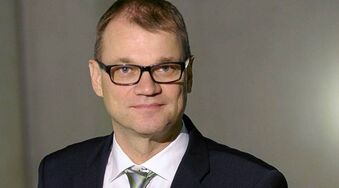-
Geopolitics
COUNTRY'S PRESENTATION
Finland is a country of 338,000 square kilometres, making it the sixth country of the European Union in terms of area. The country is bordered on the west by Sweden, on the east by Russia and on the north by Norway. It is known as "the land of 10,000 lakes" and a third of the territory lies beyond the Arctic Circle. Today the population of Finland is 5.42 million, and the capital has been Helsinki since 1812. The official languages are Finnish and Swedish.
THE HISTORY
Finland under the domination of Sweden and Russia
Finland belonged to Sweden for 600 years, from the Middle-Ages until the early 19th century. Several wars between Sweden and Russia were held in Finland during this period in order to take control of the country. In 1809, all of Finland came under the reign of Russia when Russia was victorious over Sweden. Finland was still autonomous but the king, however, was the Russian Tsar.
The independence of Finland
Finland broke away from Russia when the Finnish parliament approved the Declaration of Independence on December 6th, 1917. Finland became an independent country then.
A year later, in 1918, a civil war broke out in Finland between the Reds, who represented the workers and the whites, composed of the middle-class and the farmers. This war ended in May 1918 with the defeat of the Reds.
Independent Finland became a republic whose president was elected for a term of six years and whose laws were passed by a parliament elected by the people.
Winter War and Continuation War
The Soviet Union attacked Finland in November 1939. During the Second World War, Finland was faced with two wars against the Soviet Union: the Winter War of 1939-1940 and the 1941 continuation of war in 1944. Following these wars, Finland lost the territories which were given to the Soviet Union. More than 400,000 Finns residing in these territories had to leave their homes and settle elsewhere in Finland as refugees. But Finland had to gain its independence.
Finland after wars
Finland rapidly became a very prosperous country. However in the 1980s it had to face an economic crisis. Unemployment affected 20% of the workforce. But thanks to a revival of activity in the technology sector, the country came out of the crisis and achieved an unemployment rate below the average of the European Union. Finally, Finland joined the European Union in 1995 and is now part of the euro area.
The policy of Finland has resolutely turned towards neutrality. This has allowed the country to get through any difficult times with minimal hassle. The Finns are still reluctant to join NATO in order to respect their political neutrality.
POLITICAL SYSTEM
Finland is a parliamentary democracy. The President of the Republic, elected by direct universal suffrage, still has significant powers, but now plays a lesser role than he did twenty years ago. The government is headed by the Prime Minister who is chosen by the parliament. The government consists of the Prime Minister, different central government ministers and an ex officio member, the Chancellor of Justice.
The President of the Republic & The Prime Minister
-
Commentaires



